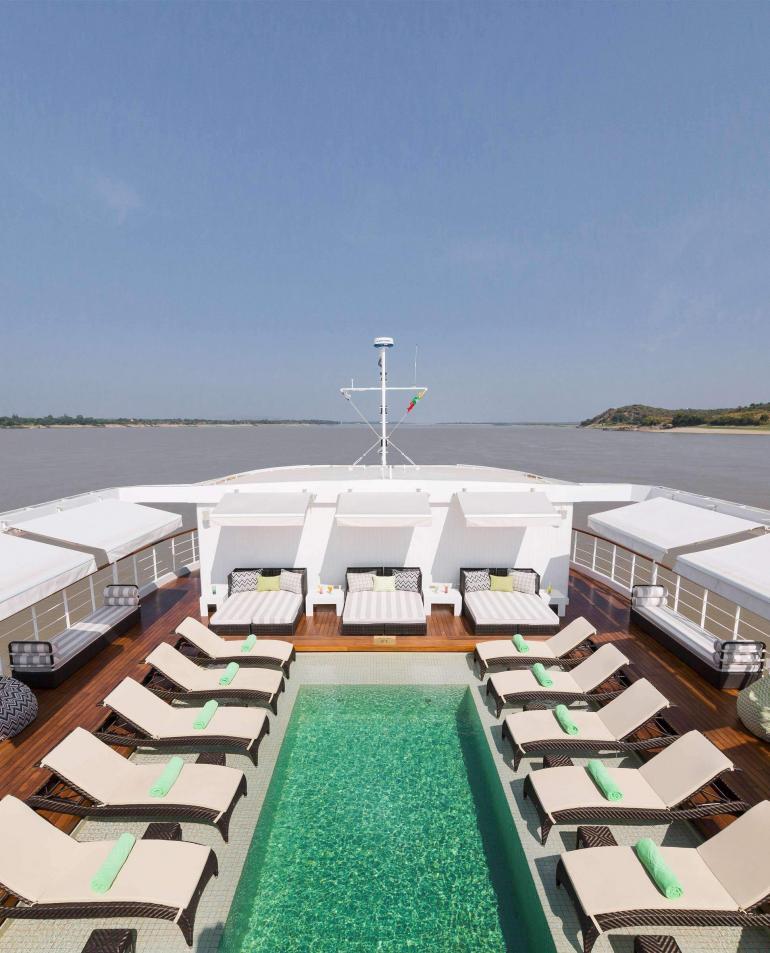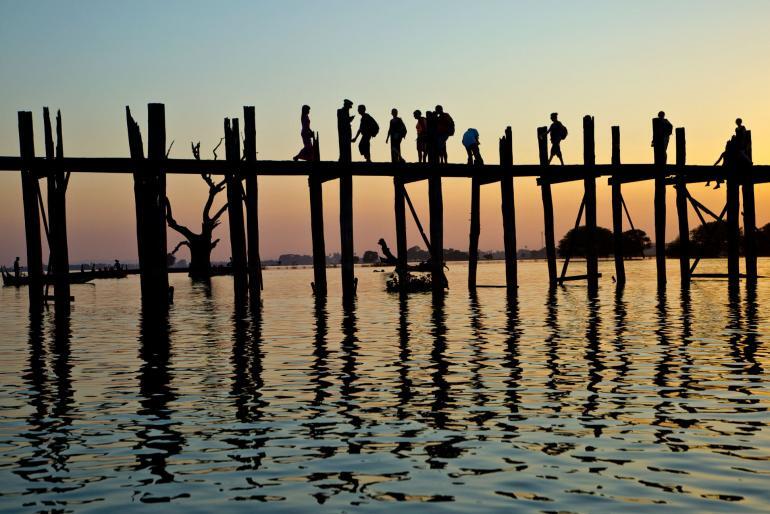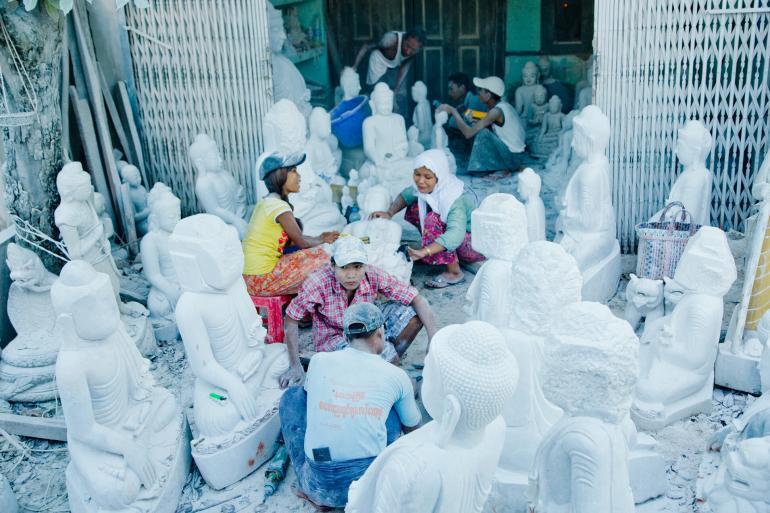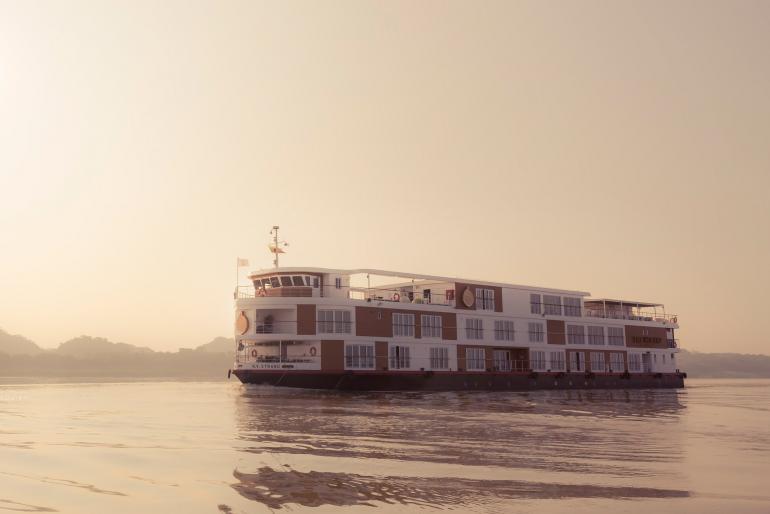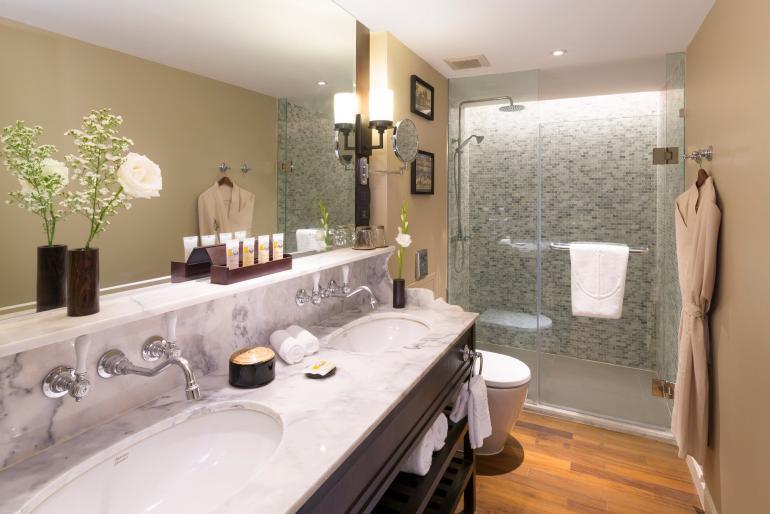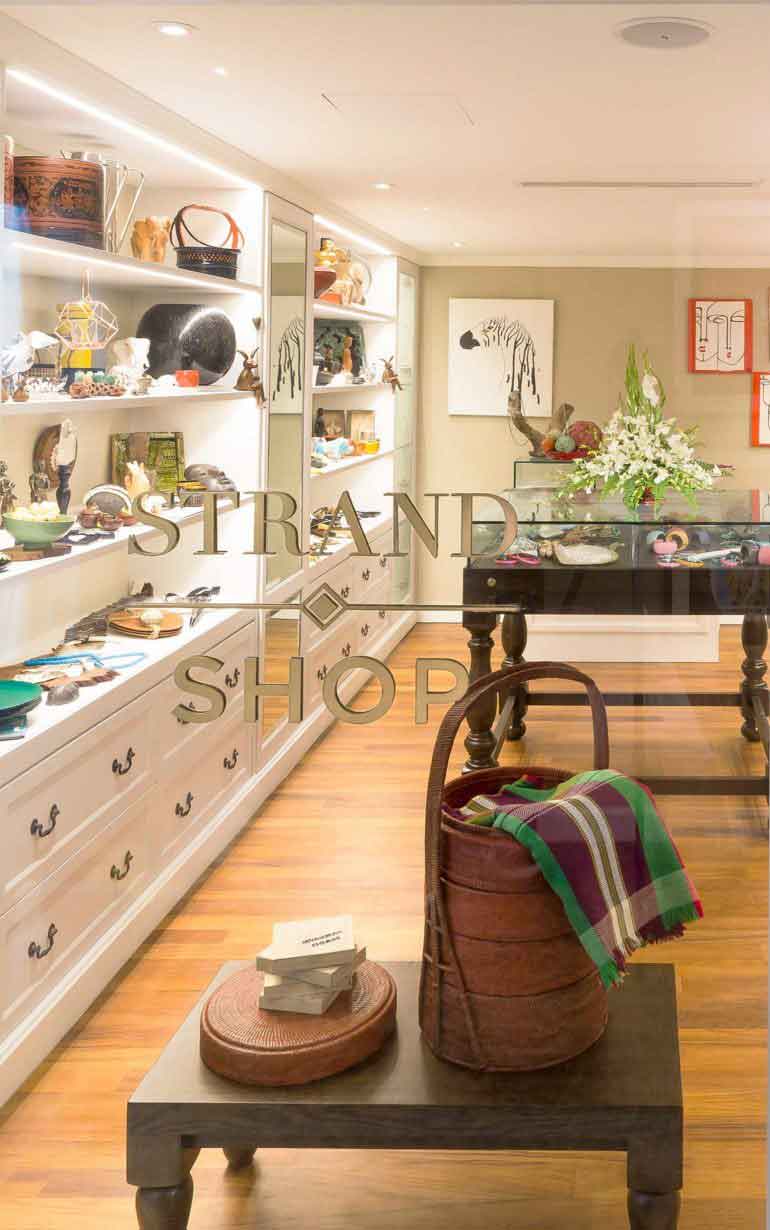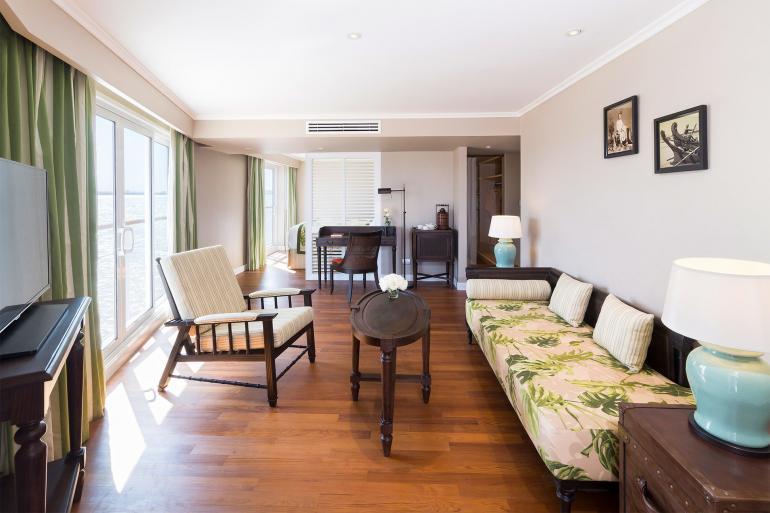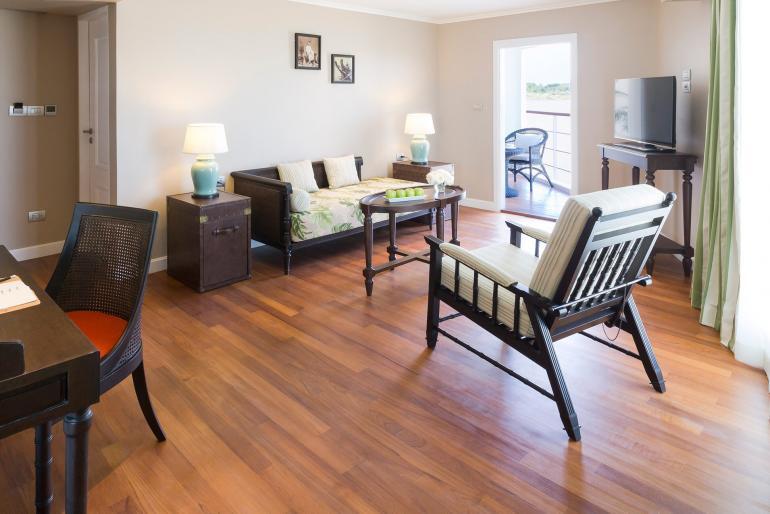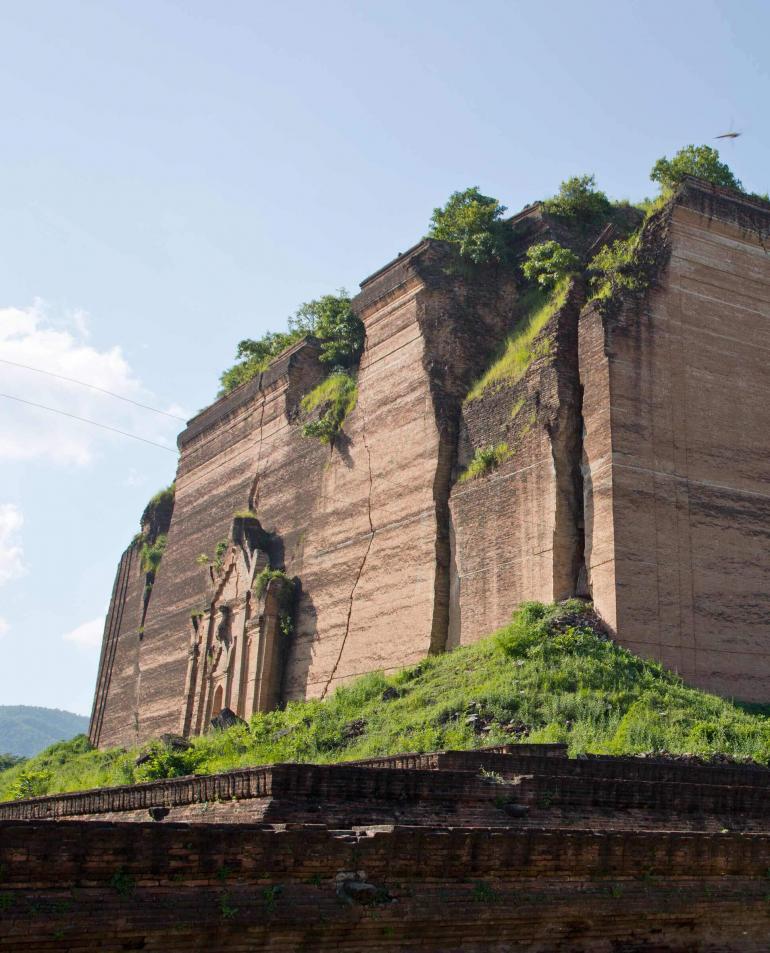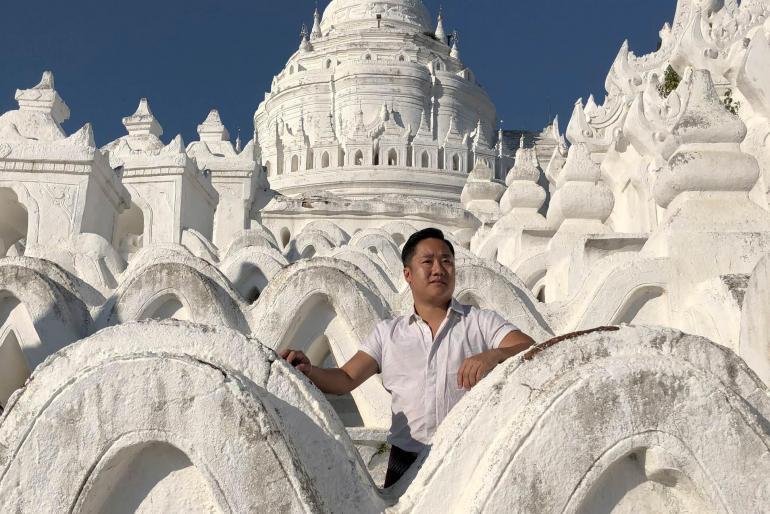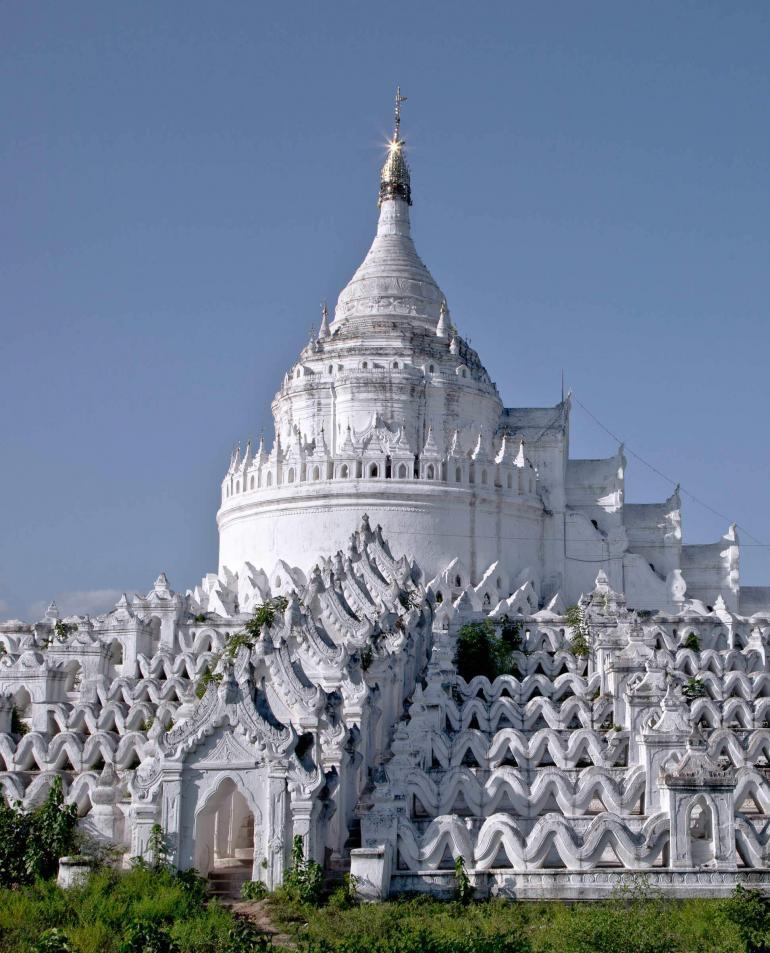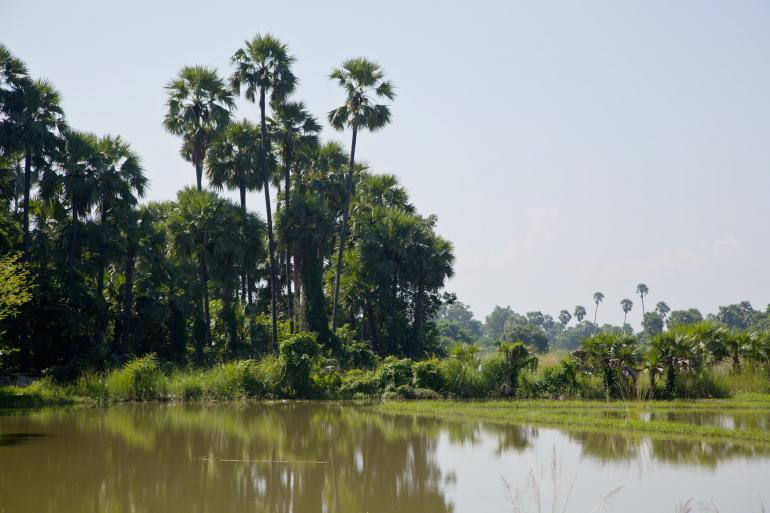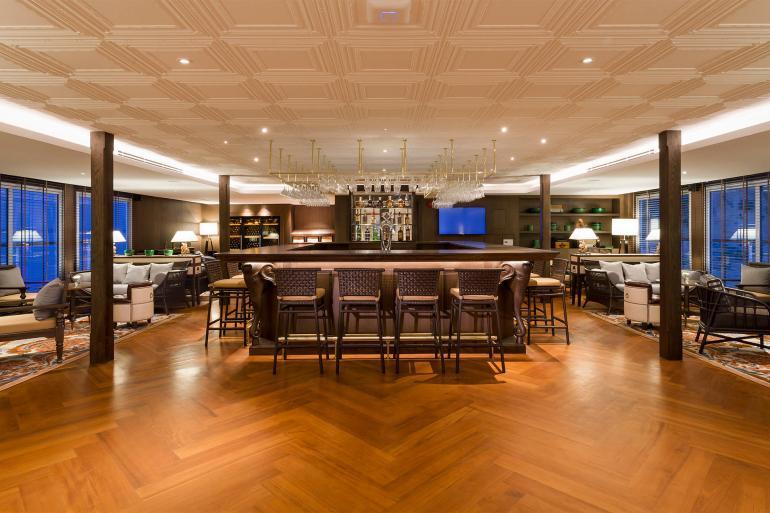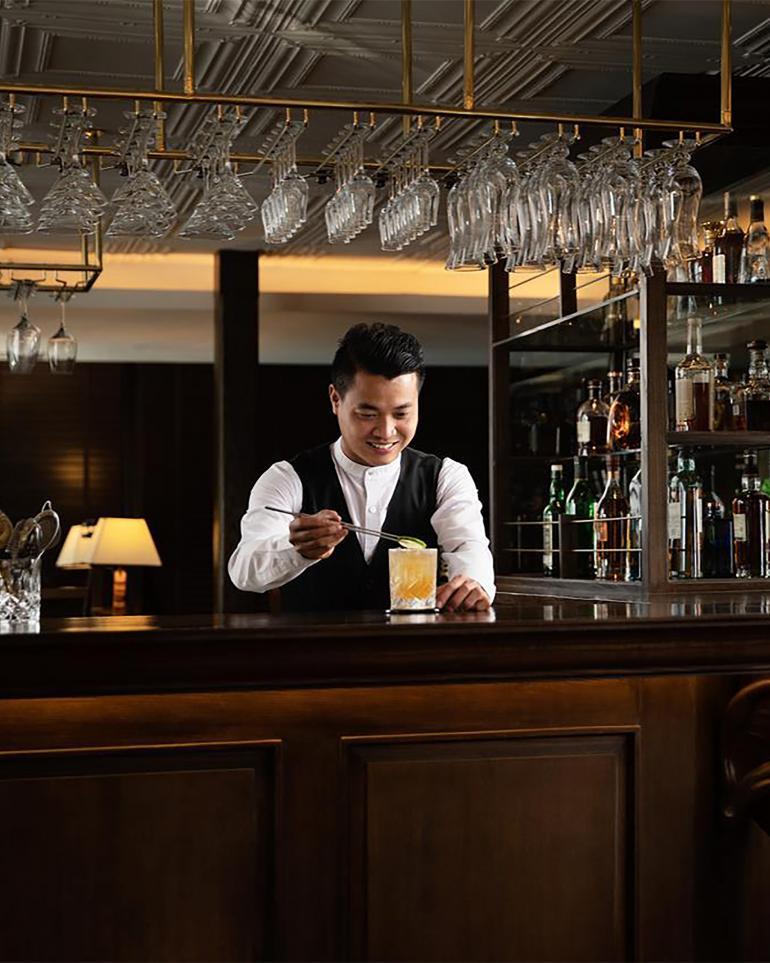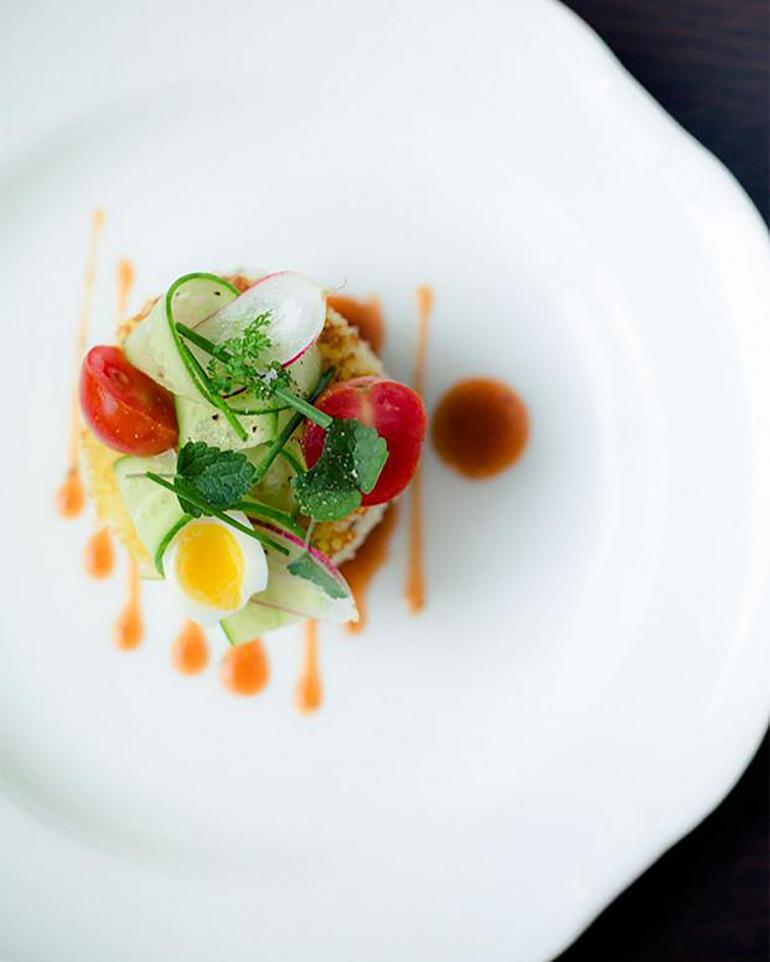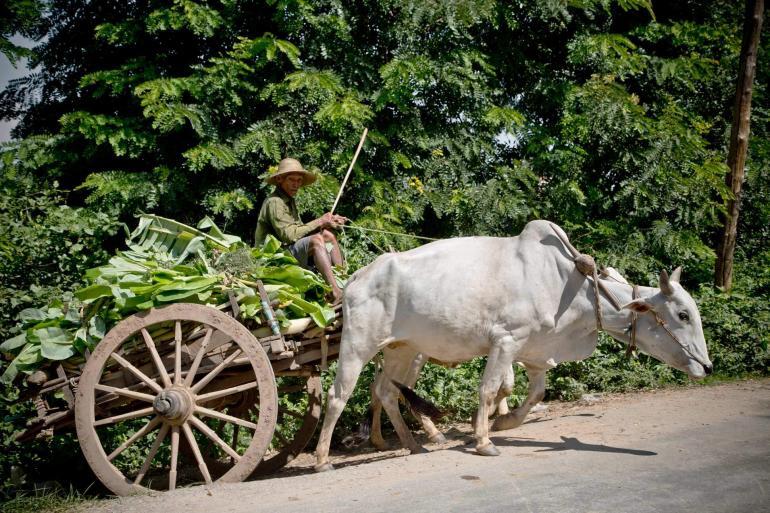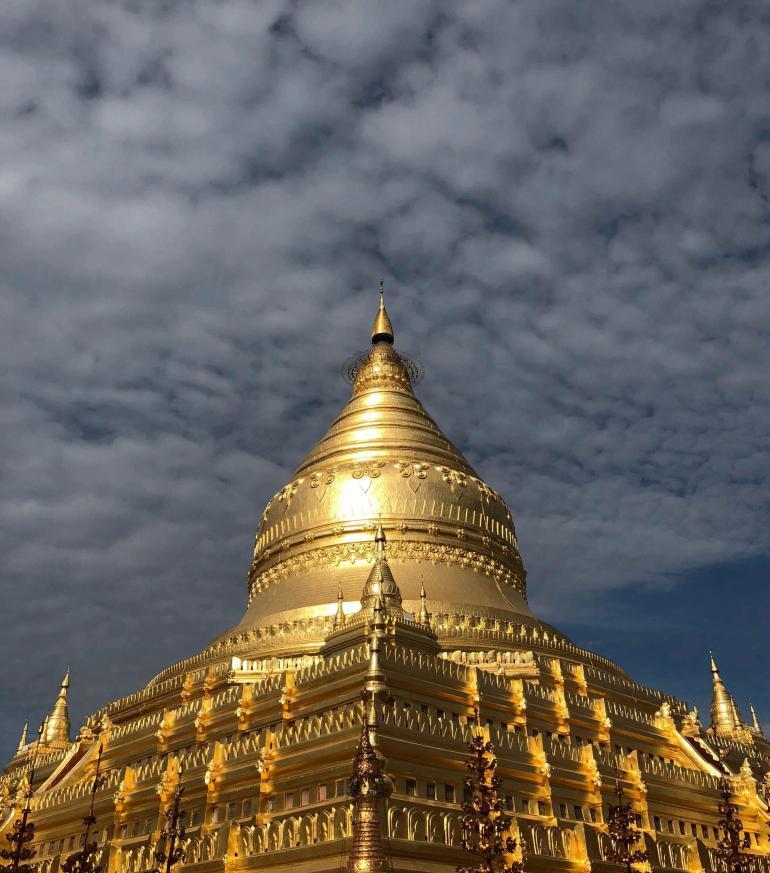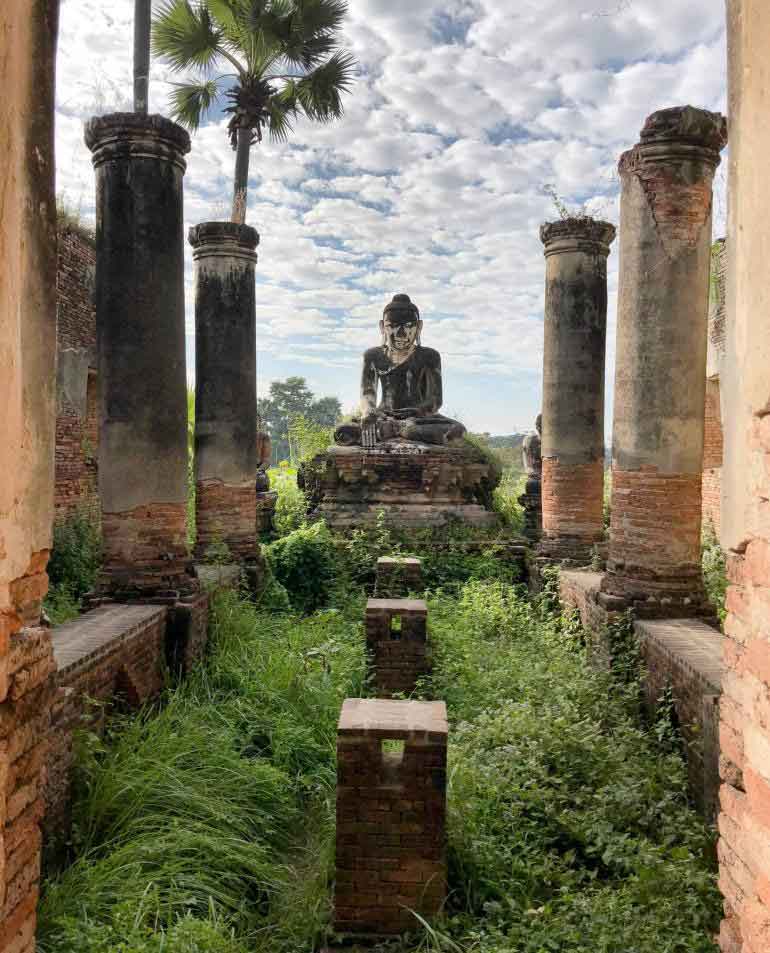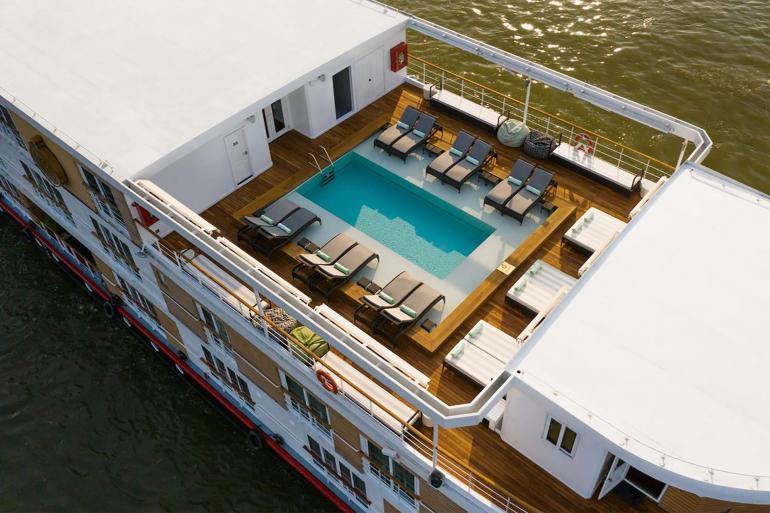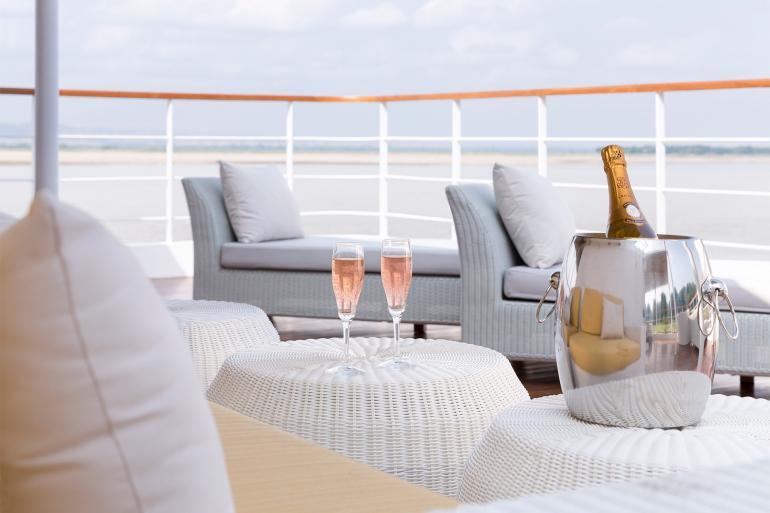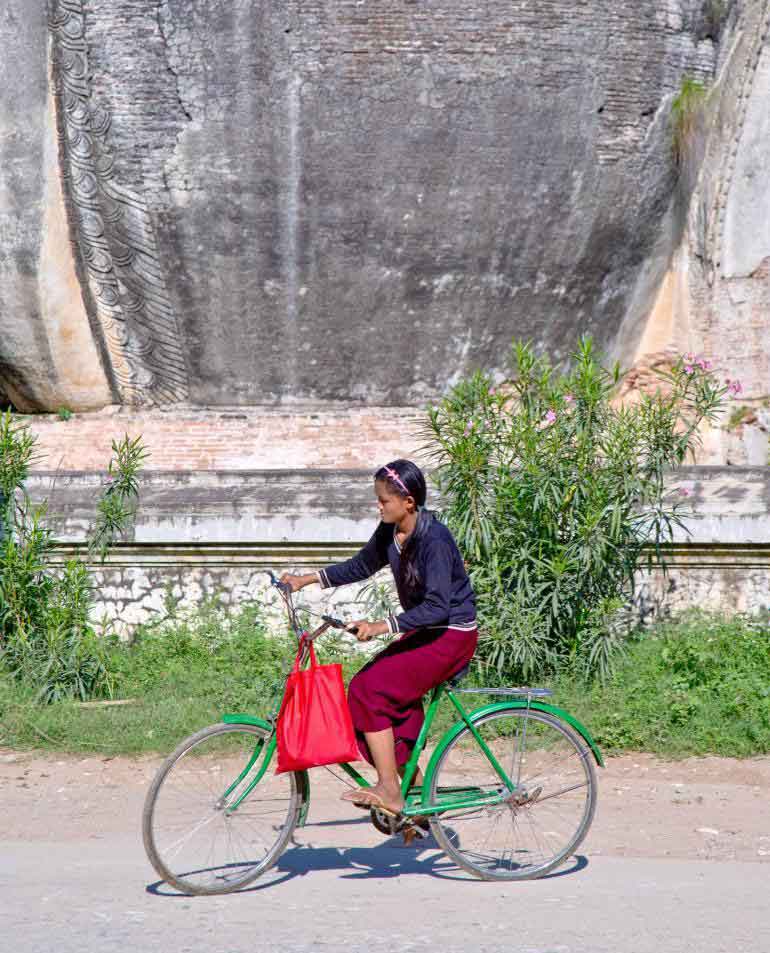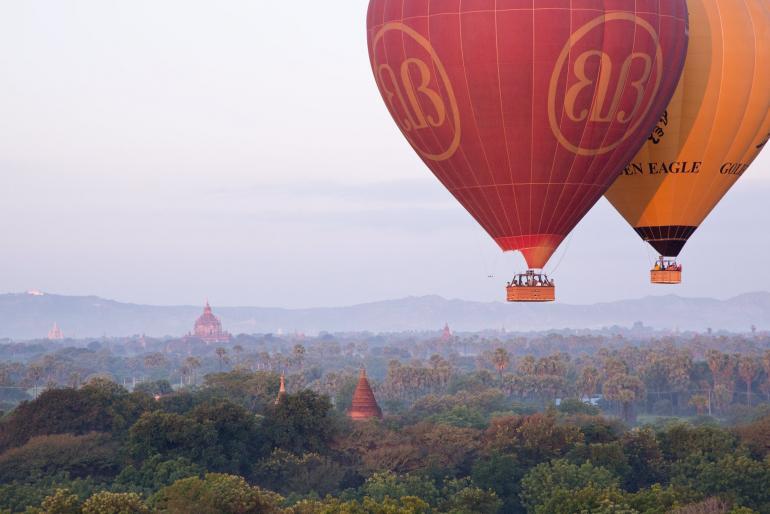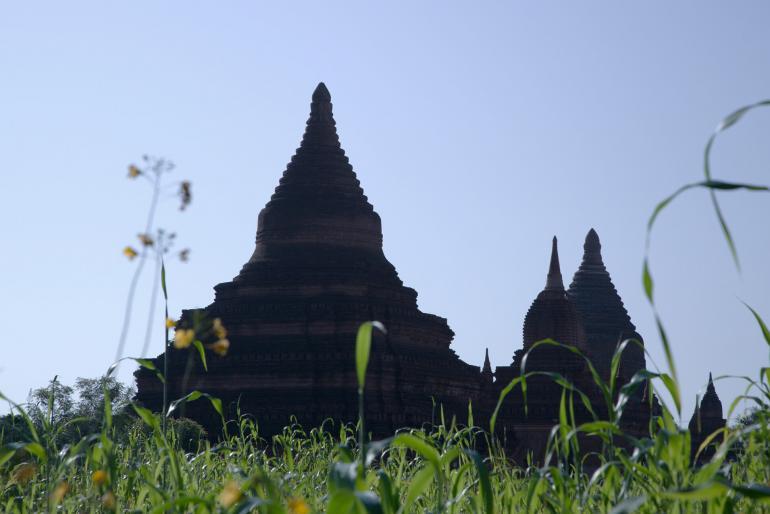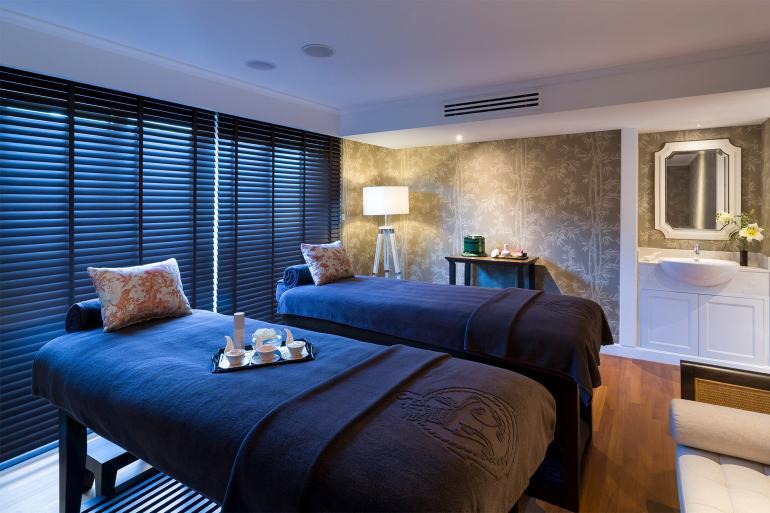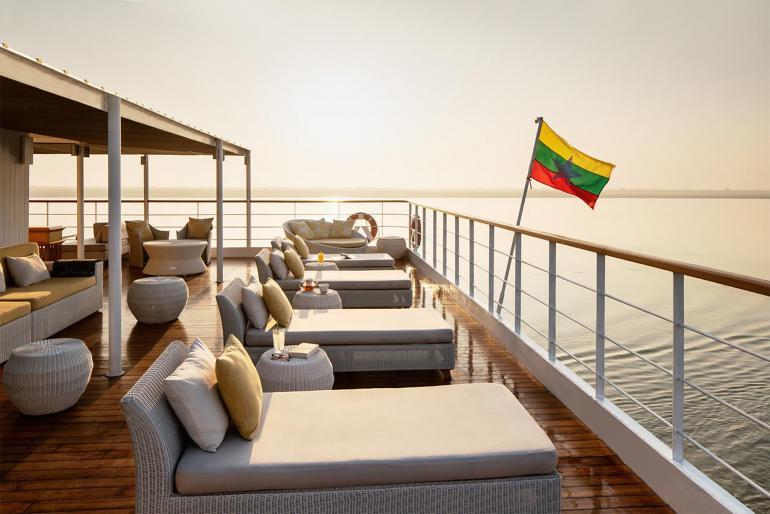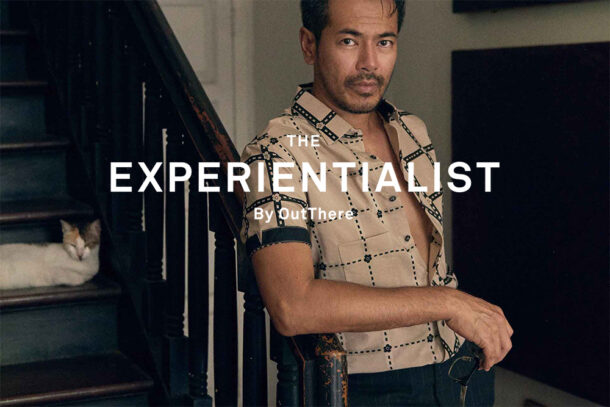A journey along the Ayeyarwady River from Mandalay to Bagan in Myanmar would be an absolute voyage of discovery and special by anyone’s standards. But on the Strand Cruise – among the most luxurious, exclusive charters one can travel with – it is a romantic dream come true.
As the sun set over Mandalay Hill, countless pins of gold shimmered brilliantly in the distance. Golden hour takes on a new meaning in this once-imperial city of gilt pagodas, palaces and temples. But Mandalay was just the tip of the iceberg, almost nothing in comparison to what we were going to see over our next few days in Myanmar.
Mandalay is important because it is the cultural and religious centre of Buddhism in the country. It was founded for this very reason. Despite its old-world feel, it has only existed since 1857, built by the devout King Mindon in fulfilment of a prophecy. The Mandalay we visited was much like other small Asian cities, with a distinct mix of Chinese, Indian and colonial influences. It was a lively melee of dust and humidity. Scores of motorbikes swarmed the potholed roads and a hotchpotch of dilapidated 1990s architecture lined its streets. Yet, there was still a captivating charm about the place. We’d walk down the street and out of nowhere would appear dozens of apprentice nuns with shaved heads and rose-pink robes. Young men in longyis (the Burmese sarong) sat on the banks of the palace moat, playing foreign music on their phones and fraternising with young women and, in some cases, other young men.
But besides being the country’s monastic hub, Mandalay served another importance to our journey. It was the starting point for an OutThere adventure of discovery through this magical land – the Strand Cruise.
Over four days leading up to New Year’s Eve, we would sail with the Strand Cruise – a luxury, contemporary riverboat presented by the owners of Yangon’s first iconic, luxury hotel, the Strand. The name itself imbues a certain sophisticated elegance and it has created quite a reputation for itself because of its rapid rise to fame in the ever-competitive Ayeyarwady River cruise market.
Our Strand Cruise guide picked us up the next morning – an older gentleman with the unexpected name of Charles – impeccably dressed in a smart starched shirt and a purple longyi. He spoke with a perfectly clipped British accent, no doubt a legacy of the colonial educational infrastructure. Friendly and not short of an anecdote or two, he gave us an insightful background to Mandalay’s history as a city, not to mention his own story in it, while we were chauffeured to our first stop of the day, the U Bein Bridge.
Breakfast was set overlooking Taungthaman Lake, which gave us our first opportunity to eyeball the other guests – the young honeymooners from Portugal, the couple from Zurich dripping in finesse, the jolly sisters from Austria and their introverted husbands, the tanned family of blonds who owned a hotel in St Tropez, the stereotypically loud Italian family of 10 and another gay couple from America – all of whom we would get to know over the next few days. It had the beginnings of a chic murder mystery.
The U Bein Bridge is an attraction of significance because of its age and engineering (it’s also a photographer’s dream). It’s a 1.2km-long, solid-teak structure that was built in 1800 with wood salvaged from an ancient palace in nearby Amarapura. Charles proudly proclaimed it the oldest wooden bridge in the world still in use and for a second we were in awe of the fact that we were treading the same planks as the ancestral kings; until he added that most of the original pillars had been replaced and the slats were constantly under renovation. For those who love the retro British sitcom Only Fools and Horses, the ‘Trigger’s broom’ scene came to mind.
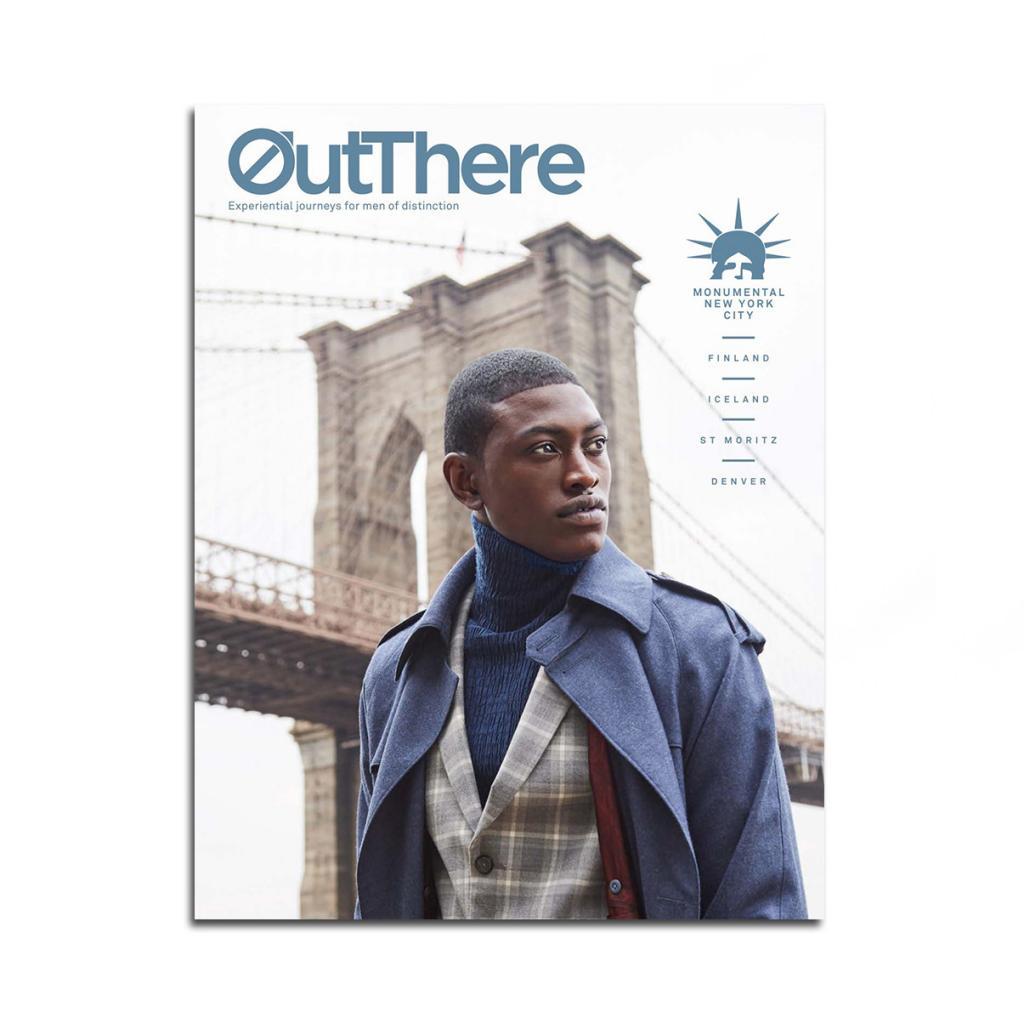
This story first appeared in The Monumental NYC Issue, available in print and digital.
Subscribe today or purchase a back copy via our online shop.
Built while U Bein was a magnet for tourists, it provided a snapshot of life in rural Myanmar today, where it seems not that much has changed in 200 years. Our amble along the bridge took less time than it should have because calm, collected Charles changed pace and we were rushed off to our next stops, the Mahamuni Pagoda and Shwe In Bin, a beautifully carved teak monastery. Despite a prompt departure schedule, we made a quick, unscheduled stop at a quirky little village – Sagyin – along the way. We couldn’t resist checking out the ubiquitous alabaster workshops here, where artisans covered in white dust chipped away at large blocks of stone, creating Buddha effigies and other sculptures. We were most taken by the rows of faceless Buddha statues – standing sentry, like something out of a surreal science-fiction movie – faceless because, while their bodies could be worked on by an apprentice, their faces can only be carved by a master.
We boarded the ship at a rather nondescript bank of the Ayeyarwady (we’re told because the tide was lower than usual). But the downplayed, makeshift port went a long way to showcasing the majestic cruiser we were about to step onto, a beautifully designed 61m craft, created to carry just 50 passengers in 25 cabins.
Ours was remarkably spacious, decorated in a historical style, much in line with the sister hotel in Yangon but, of course, compensating for the fact that we were on a boat. Yet, it was extremely comfortable, with everything you’d expect from a hotel room, including a sumptuous king bed. The interior design took inspiration from the communities of the river and the natural beauty of the waterways was reflected in the colour palette – leafy greens, warm teak and gold leaf. Our cabin suite also featured a floor-to-ceiling window with juliet balcony, perfect for watching the world go by.
The rest of the Strand Cruise ship was also gorgeously appointed. A showcase staircase separated three floors. On the upper deck was the sprawling Sarkies Bar, a lounge-like, brown-leather space that brought out the raconteurs in us, a perfect place to socialise and swap stories with other adventurers. The bar led out to the terrace and pool deck, where we spent most of our time between shore excursions, topping up our tans, reading and doing absolutely nothing – with a glass of something alcoholic in hand – watching the sunsets, the life on the river and thousands of temples and pagodas pass us by. On the middle floor was the dining room and curated boutique, as well as a small spa. Downstairs, we even found a well-equipped fitness centre, much to our amazement.
As the boat glided off on its journey, there was time for champagne on the upper deck and an introduction to the team, headed up by Neville, the Myanmarese cruise director. Service on board would proceed to be spot on throughout the journey, with a mainly French team supporting Neville – a cruise manager, a sommelier and the enigmatic Bilou, the entertainment-cum-excursion director – all in charge of passenger happiness. But the stars of the show were certainly the ever-smiling, super polite, ‘can’t do enough for you’ local team of butlers, servers, barmen, front-of-house staff and stewards, who ensured we never went hungry or, more importantly, thirsty and who fastidiously cleaned our shoes after every shore excursion and delivered them to our rooms in just minutes.
Our first lunch was the best meal of the entire journey, but that’s only because it was stellar. All our other meals were superb, too: each day a different cuisine – Thai, Mediterranean, French – served up by the ship’s Thai head chef. But this, our first meal on the ship and an introduction to Burmese cuisine, was a thali-like feast of mouth-watering pickles, salads (collectively known as a thoke) and curries, demonstrating a perfect Chinese, Thai and Indian gastronomical fusion. Each meal on board was accompanied by a selection of wine, handpicked by the sommelier.
A couple of hours upstream, we sidled up to the old settlement of Mingun, where we toured the remains of Mingun Paya, the base of what would have been the world’s largest pagoda had an earthquake not damaged it in 1819. We walked through this rural village, stopping to watch old women roll cigars and crush thanaka, a paste made from ground bark that is said to be the secret of Burmese beauty. Always ones for aesthetic improvement, we had some rubbed on our cheeks. This was a little much for Charles, who broke his usual protocol and ridiculed us for it, saying that it was something that only females would wear, going on further to point out that the longyis we had bought in the market earlier were rather feminine. Not that we really cared, of course. We were more than happy to be our out-and-proud selves. Suffice it to say, we got our own back when his tip-expectant farewell handshake was met with nothing but my fleshy, queer palm.
Next up was one of our favourites – the Taj Mahal of Myanmar – Hsinbyume Pagoda, a stunning, seven-terraced, alabaster white edifice reflecting the seven mountain ranges around Mount Meru, the centre of the Buddhist universe. It really is a beautiful piece of architecture and it is dedicated to love, built by a prince in everlasting memory of his wife.
That night, the ship pulled up on a giant sand-bank in the middle of the river. We took off our shoes and let the Caribbean-like sand slip through our toes as the crew unveiled a bonfire, barbecue, pop-up cocktail bar and alfresco dining setup for us all. It was just magical – the perfect icebreaker to meet the other guests, who all revelled in this surprise after a fantastic day of exploring. It turned out that there were many French-speaking guests onboard, but people came from all over and it was a remarkably high-flying calibre of guests. With plenty of cocktails flowing, we met an Olympic swimmer from Hong Kong and her equally athletic boyfriend, discussed the best British private boarding schools with the couple from Zurich and swapped photography knowledge with an award-winning orthodontist from Stuttgart. It was fun travelling as a group throughout the cruise, but we also found that the layout of the ship was conducive to escaping when we needed to, with plenty of quiet corners to get lost in a book or enjoy a few quiet moments of reflection.
Bright and early the next morning, after a hearty breakfast, we set off into Ava, the imperial capital of successive Burmese kingdoms from the 14th to the 19th century, on a traditional horse and cart guided by a charismatic woman whose only English were the words ‘lady driver’ while pointing at herself. We rode through beautiful, endless banana plantations and marvelled at some awe-inspiring sites, including the Yadana Shemee, Bagaya and Manu Paya – each like something out of an epic movie set.
Throughout the journey, we were followed by a young girl on a bicycle, flogging souvenirs. She spoke perfect English and seven other languages and was charming, persuasive and cunning all at the same time – complimenting us on our dress sense, demonstrating her open-mindedness that we were a same-gender couple and telling us a sob story of how she lost her parents to cancer. All this, for a sale; we were tempted to recruit her to sell our advertising. We think of ourselves as headstrong travellers, but eventually, she broke us down and we parted with some change for some jade (glass) beads, just as she rode off to shake down some other tourist. And right then, a young boy appeared on a bike and gave us the identical patter. There must have been a school for hustlers nearby. Oliver Twist ran through our minds.
There’s something very special about the sunsets on this part of the Ayeyarwady, especially from a large sun lounger for two, aft of the Strand cruiser. The scene it creates has the power to stop you in your tracks, make you put down your book or drink and just watch. When the sun starts to dip, the sky turns into a spectacular light show of hues and it is as if the ship has been transported back in time, in slow motion, to an enchanted world of glistening gold pagodas, old bridges and bobbing boats. For all you hopeless romantics, it’s like love at first sight and it took our breath away. Out on the banks, scores of local people did exactly the same: they put down their work or washing or whatever they were doing at the time and watched, equally mesmerised. The Myanmarese love this time of day – they believe in demonstrating gratitude to the gods for the day just gone and praying for the promise of a brand new one. With the sun’s last rays firing up the horizon comes the realisation that tomorrow holds endless bounties and possibilities. And with this kind of beauty, albeit fleeting, tomorrow would certainly be special.
On the final day of cruising, we pulled into the ancient Bagan – the mother-lode of Myanmar’s temple stock, a 26-sq-m wonderland of over 2,500 religious buildings and 5,000 temple ruins, each towering from the forest canopies. It is one of the world’s most amazing archaeological sites, built by old Burmese kings between the 11th and 13th centuries. Our tour of the Bagan Heritage Trail included wonders like the Ananda Temple, the so-called Westminster Abbey of South East Asia. It’s a fair moniker, as Ananda is a majestic Buddhist ‘cathedral’ – and we say that because it looks like one, in cruciform shape and containing cloisters and prayer halls, much like its Christian counterparts – except that it was built in the 1100s, a century before the one in London. Other breathtaking highlights included the shimmering, golden Shwezigon pagoda and Gubyaukgyi temple, with its magnificent, intricately painted frescoes. We wanted to see more, but you could stay a whole month in Bagan and just scrape the surface. That’s the first-world problem with these excursions: there’s just so much to see, but not enough time to see it in. But kudos to Bilou and the team of guides; they had put together a must-see itinerary of the most fascinating sites.
The few days passed quickly and we had completely forgotten it was New Year’s Eve. That night, the skies opened cinematically. The Myanmarese rejoiced as it was a sign of cleansing and purity for the new year ahead. Undeterred by the monsoon rain, the crew on the ship put on a traditional show for us, with some local dancers from the Bagan cultural school, a tasteful and fun insight into the local culture. Dinner was an elaborate affair, a French gastronomical menu, paired with fine wines for the celebration. A little merry, we forwent the rest of the organised jollity and snuck back to our room for a quiet glass of champagne to call in the new year. After all, we had an early start the next day. Word was that the Strand Cruise NYE party went on into the early hours, fireworks and all.
At the crack of dawn, our Strand Cruise butler came to collect us and the entire crew was awake to see us off the ship and onto a hot-air balloon, for one of the single most bedazzling experiences of our lives.
The balloon rose slowly over this ancient kingdom and, as if by magic, the thick, lingering rainclouds dissipated, weaving between the tall ruins like fingers stroking through hair. The rising new-year sun silhouetted the distant mountains and the other balloons, spotlighting the jaw-dropping view of endless temples in glorious detail, some of which seemed close enough for us to be able to lean out and touch them.
Our adventure in Myanmar is something we’ll never forget for as long as we live – the stuff of dreams. We knew it was going to be spectacular, in any case, but travelling with the Strand Cruise in pure luxury, with every whim and desire being catered for, made for a spellbinding experience that was beyond memorable. You can do the journey in reverse – from Bagan to Mandalay – but we recommend doing it the way we did. It seemed as if each experience, each magnificent stop we made, dwarfed the last and the momentum built as time passed, creating a crescendo of sights until we reached an incredible finale in Bagan.
Uwern was a guest of The Strand Cruise. This journey can be booked with confidence, with exceptional travel company, Scott Dunn. Find out more or speak to a specialist travel consultant on (UK) 0203 993 4933 or (US) (858) 703 4162.
Photography by Thanaporn Laboup
At OutThere, we believe in boundless travel. But we understand that some destinations can pose challenges to travellers that complicate visiting them. We advise all visitors to inform themselves about local legislation and customs, and to work with a trusted travel provider in order to ensure a safe and pleasant holiday.


